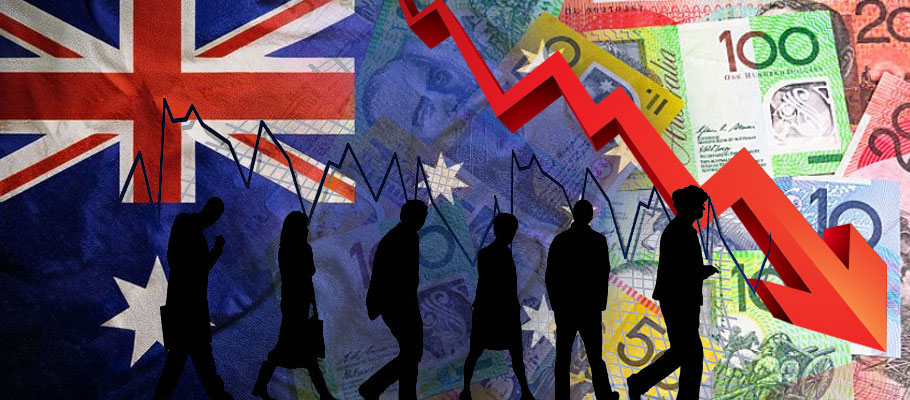
Published: September 24th, 2025
Australia shed 5,400 jobs in August, confounding consensus expectations of a 22,000 rise. The result rattled markets. The Aussie slid against nearly all its G10 peers: GBP/AUD rose to A$ 2.0544 while AUD/USD climbed to US $0.6635. The stumble suggests that currency traders see weaker labour markets forcing the central bank's hand. Rate cuts, they wager, are back on the menu.
For a brief moment the Australian dollar looked sprightly. A run of upbeat data in late August and early September persuaded investors that the economy was on the mend and that the Reserve Bank of Australia (RBA) might pause its steady diet of rate cuts. Then reality bit.
The timing is awkward. For weeks, optimism had been mounting that Australia's economy was finding its footing just as the Federal Reserve began easing in America. That cocktail bolstered the Aussie through early September. Yet employment, long the RBA's barometer of underlying health, has reminded investors of the risks.
Markets now assume that the central bank cannot brush aside softening jobs data. Michele Bullock, the RBA's governor, has been at pains to stress the importance of wage and employment trends. A central bank keen not to appear aloof is therefore unlikely to resist a dovish tilt if weakness persists.
Banks are split on what comes next. Westpac reckons the labour market is deteriorating fast enough to warrant a rate cut as soon as November, followed by another 50 basis points of easing in 2026. Its analysts argue that falling participation masks deeper fragility, and unemployment will keep inching upwards.
Commonwealth Bank of Australia (CBA) takes the other side. Though it concedes the risks lean towards higher joblessness, it argues that unemployment lags other indicators, and those suggest momentum is improving. CBA thus expects only one further rate cut, compared with two priced in by futures markets. If correct, today's swoon in the Aussie may prove overdone. Good news in the next few months could steady nerves and tempt the RBA to halt its cutting cycle.
Not everyone is gloomy. Strategists at Bank of America argue that the currency is in the early stages of a structural rebound. The Aussie, they note, peaked more than a decade ago, sank to pandemic lows, and has since staged a three-wave recovery. Technical analysts now spy the outlines of a breakout, with resistance looming near US$0.70.
The note was laced with caveats like “there is always another trend line somewhere,” but the gist was upbeat. The “impulsive recovery” from April's trough, they argued, has carried the currency into a region from which past rallies have emerged. If history rhymes, the Aussie may yet surprise on the upside.
For its part, the RBA is keeping a studied calm. Ms Bullock told parliament this week that inflation was in a “very good position”, subdued by earlier rate rises. Yet she warned of risks “on both sides”: inflation could flare if policy loosens too quickly, or slump if demand falters further.
On geopolitical concerns, the governor was less diplomatic. America's escalating tariffs on Chinese imports threaten Australia's biggest trading partner, she cautioned. That in turn could ripple into Australian exports and financial stability. “Markets,” she said pointedly, “have not fully priced in these risks.”
For now, most economists expect the RBA to keep its policy rate at 3.6% next week, after August's quarter-point cut. Markets give slim odds, around 10%, to another move so soon, but see an 86% chance of easing in November.
The dollar's path is shaped as much by Washington as by Sydney. American monetary policy, already the chief driver of global capital flows, remains in flux. Traders are parsing every syllable of “Fedspeak” — the oracular language by which officials hint at policy shifts.
Stephen Miran, a newly installed Fed governor, kicked off the week with a strikingly dovish speech in New York. He urged the central bank to cut rates “aggressively”, arguing that a changed policy landscape of lower rents, lighter regulation, immigration shifts and fresh tariff revenue, meant the neutral interest rate was now lower than before.
Mr Miran's remarks were thick with economic models, invoking the Taylor Rule and citing reams of data. The thrust, however, was simple: keeping policy “restrictive by such a large degree” risked breaching the Fed's employment mandate. Inflation may be tamed, but growth, he warned, could be smothered in the process.
That juxtaposition neatly frames Australia's plight. Central bankers on both sides of the Pacific are working to engineer soft landings: managing disinflation without a brutal rise in unemployment. Both are wary of cutting too slowly or too fast. Yet every divergence matters.
America's labour market, though softening, still looks energetic. Australia's just blinked red.
For the Aussie, that divergence could prove decisive. If the Fed slashes rates faster than the RBA, the interest-rate differential narrows, propping up the currency. If Australia loosens first, or more aggressively, the dollar slides. For now, markets seem to think the latter is more likely.
What does this mean for investors? In the near term, expect choppiness. Traders will scrutinise every employment release and inflation print for hints of policy direction. Currency moves will be sharp and sentiment-driven, amplified by thin conviction.
Longer term, the story is less dire. Australia still enjoys favourable fundamentals: a resource-rich economy tethered to Asia's growth, stable institutions and manageable debt. The RBA's caution may cap downside risks, particularly if China avoids a deeper slump. And if Bank of America's chartists are right, the Aussie could yet be “flirting with a breakout”.
For now, though, the headline is clear. A modest loss of 5,400 jobs has reminded markets that confidence in Australia's recovery remains fragile. The Aussie's fall is as much about perception as reality. But perception, as any FX trader knows, is often what counts.